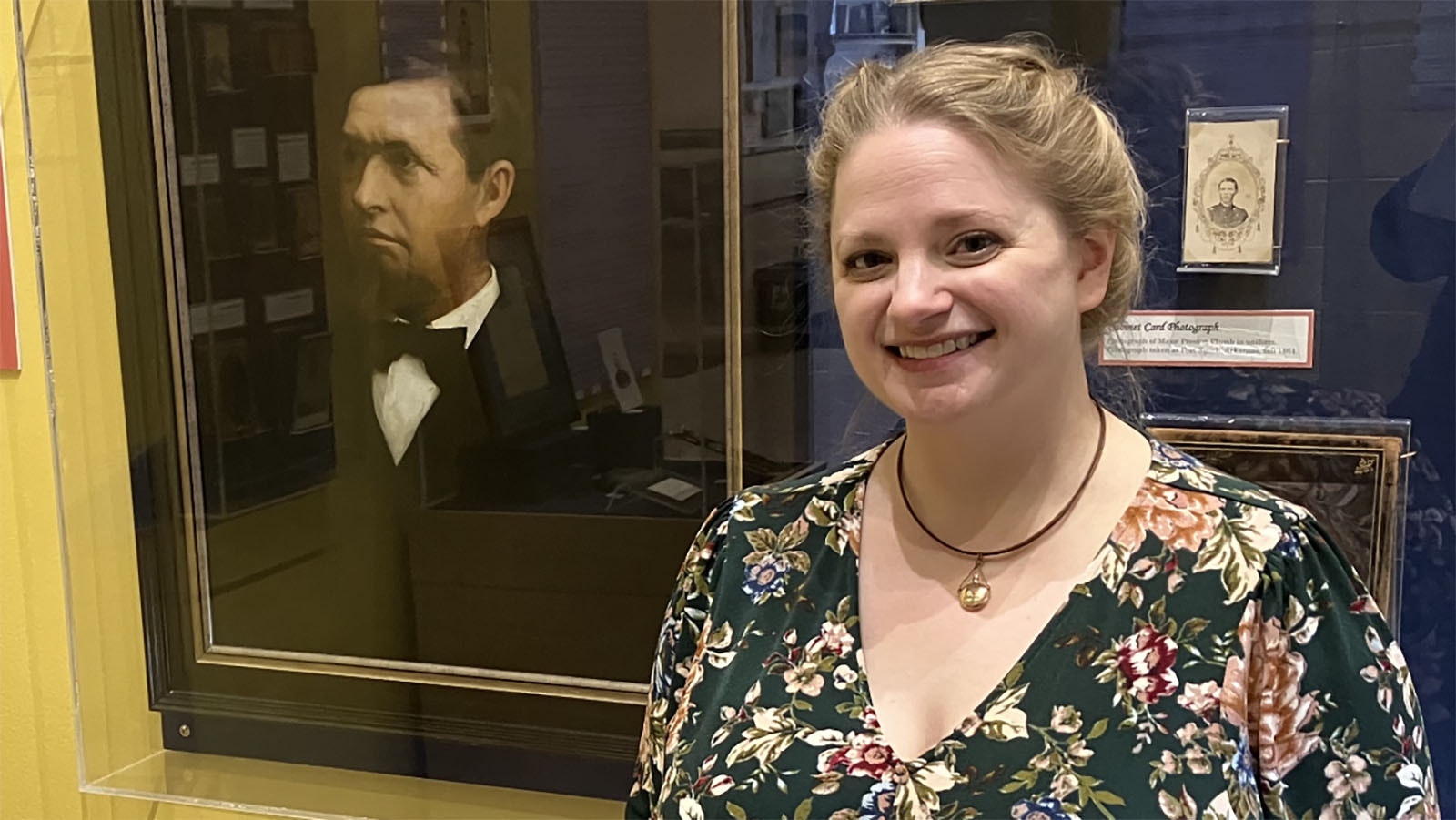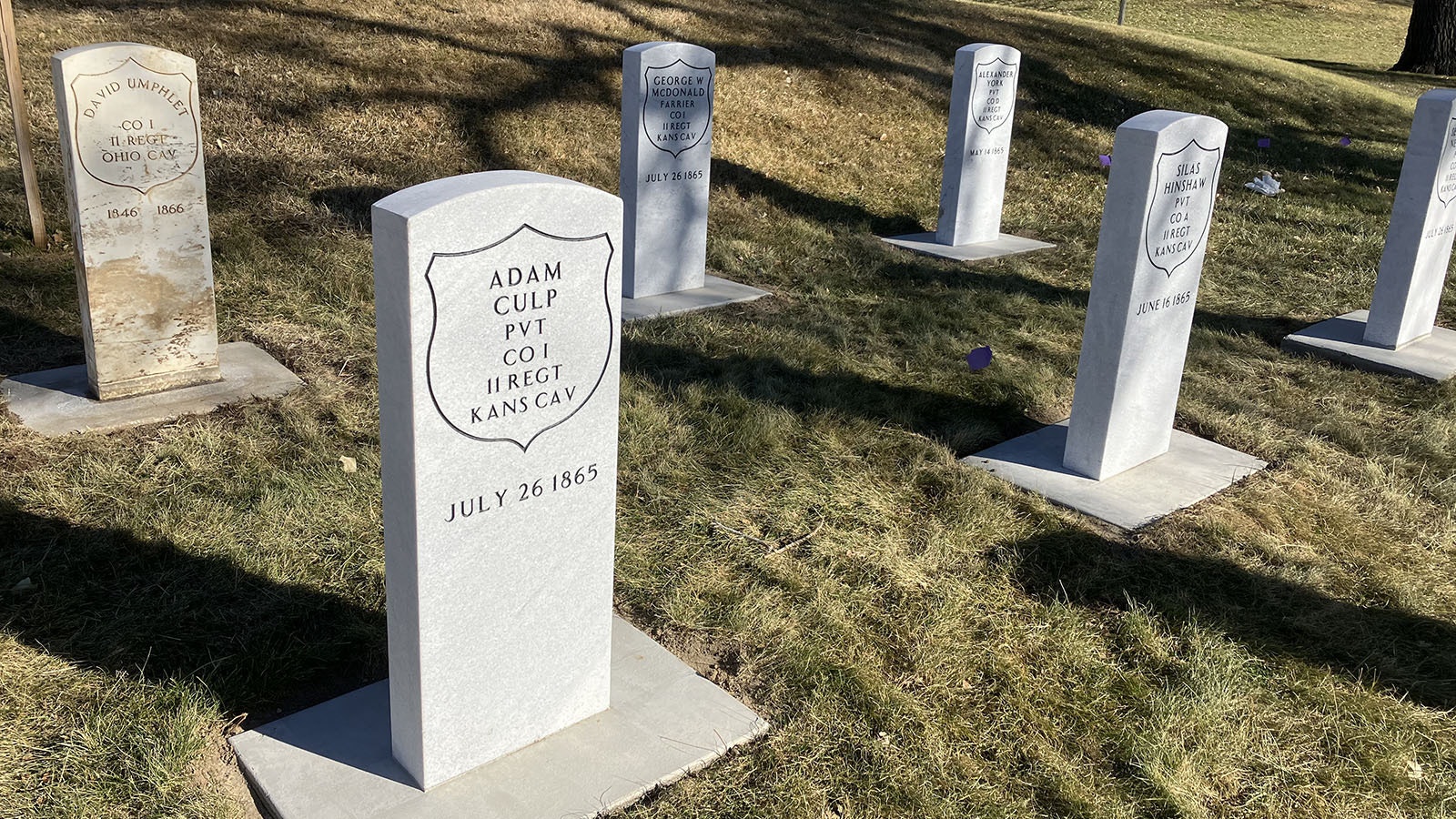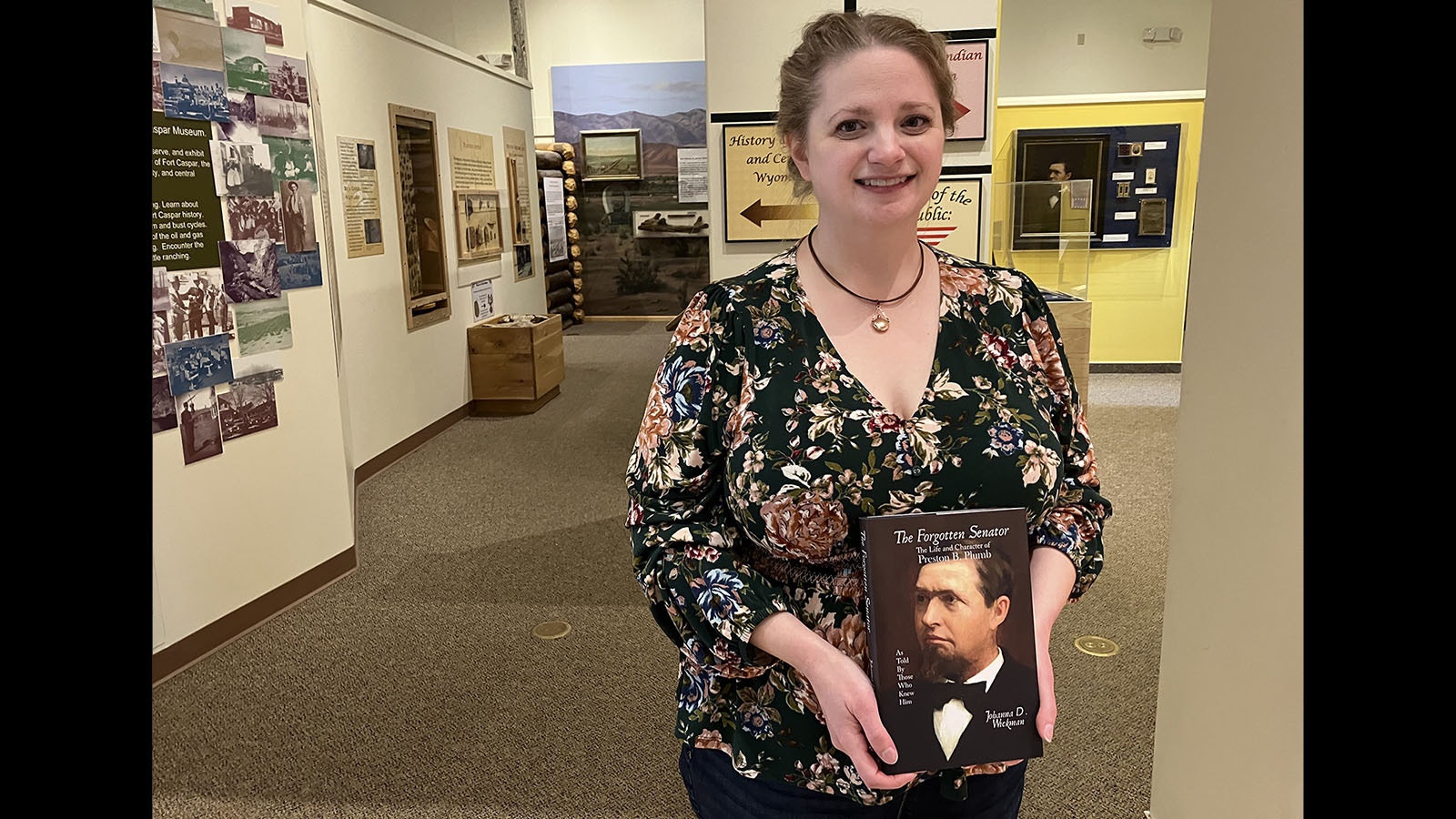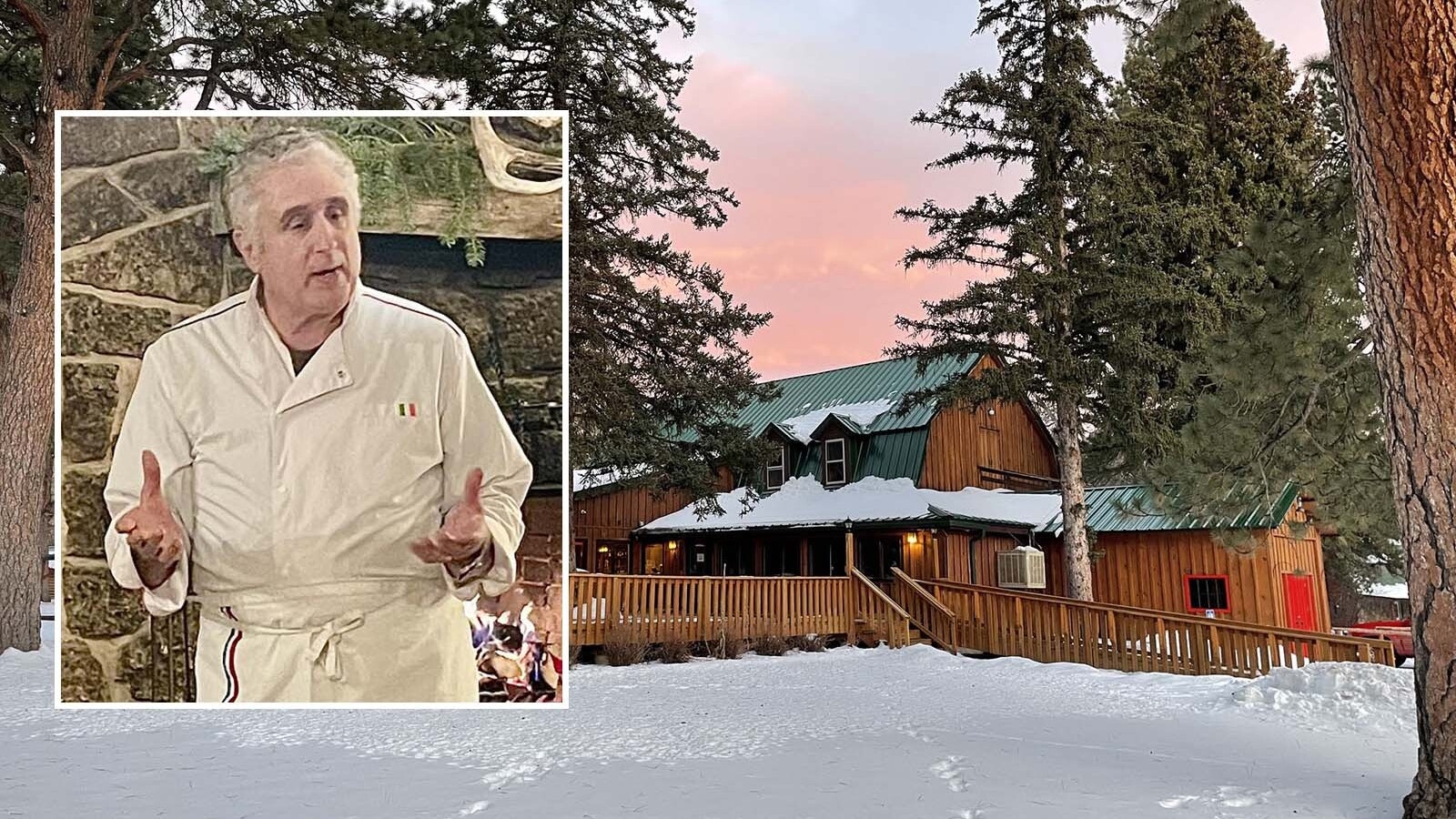CASPER — When historical consultant and author Johanna Wickman saw actors Jeff Daniels, Martin Sheen and Tom Berenger portraying Civil War generals clashing on the hills around Gettysburg, something clicked.
“I have always had an interest in military history,” she said. “When I was 10 that movie ‘Gettysburg’ came out, and it’s one of my favorite films. For whatever reason, that really struck a chord with me, and I went to the library and got every book I could find on Civil War history. I was reading adult 4-inch-thick books on Chamberlain and that sort of thing.”
In college she kept asking herself what she could do with history and decided she wanted to work with museums because that meant dealing with historical artifacts.
Her bachelor’s degree from the University of Wyoming is in humanities and fine arts, but it didn’t open museum doors because she had no hands-on experience. She then took the museum and gallery studies program at Casper College and got an internship at the Wyoming Veteran’s Memorial Museum. While working there, she applied for a museum director job in La Quinta near Palm Springs, California.
But it wasn’t until the son of famed comedian Harpo Marx offered Wickman his iconic trench coat that she realized the importance of properly preserving history.
A Museum Director at 25
“They flew me out there, I did multiple interviews and they ended up giving me the job,” she said. “I went straight from interning at the Wyoming Veteran’s Memorial Museum to a museum director in Palm Springs. I was 25. I was definitely thrown into the fire there.”
She found herself leading efforts at a multimillion-dollar city-owned museum whose leadership had specific plans for her to implement. They wanted an exhibit on space, followed two to three weeks later by an exhibit on Abraham Lincoln, then railroads and then the circus.
“They gave me all these topics. I said, ‘OK,’ where is the collection? What do you have in the collection for these?” she said, adding that the response was, “We don’t have anything.”
At the Fort Caspar Museum, where she now serves on the board and has worked with the museum to install its current “Soldiers of the Republic: Stories of the 11th Kansas Volunteer Cavalry” exhibit, she said work happens months in advance to prepare.
Wickman responded to her leaderships’ request by making phone calls, asking to borrow items and figuring out how to convince others to loan items to make it happen. She succeeded.
“I learned a lot about working with a small budget, working with no artifacts, how to make an exhibit and where can you find things,” she said. “It was a tremendous learning experience.”
A New Proposal
After those successes, she proposed putting the museum’s budget into one exhibit and letting it remain available for months. The city pushed back and said people come to events, not exhibits. She challenged them and was able to test her theory with an exhibit on robot dinosaurs that also included fossils, hands-on displays for children, and more.
“And it was first time we had an exhibit opening and we had a line,” she said. “It was featured in the LA Times. We went from 30 to 40 guests a month to 3,000. It was insane.”
She learned a lot about working with volunteers and nonprofit organizations to pull it off. During her three years there she also did an exhibit on the Civil War as a way to educate those wealthy Californians about the fact Civil War soldiers were stationed in the area. She also pulled together a Civil War re-enactment camp that drew hundreds and brought media coverage.
Her return to Casper, where she grew up, was spurred by an incident involving a famous Hollywood family in 2011.
Harpo’s Coat
She put together an exhibit on old Hollywood because the Palm Springs area was noted as being a place where stars such as Errol Flynn and others from the 1930s and 1940s would to play. That exhibit led to a phone call from Bill Marx, the son of Harpo Marx of the Marx Brothers comedy troupe.
“He had all of his father’s stuff and was looking for a home for it. The Smithsonian also wanted Harpo’s stuff. I grew up watching Marx Brothers movies, and when he reached out to me it was like, ‘this is amazing,’” she said.
He invited her to his house, told her Marx Brothers stories, then pulled out his dad’s trunk of memorabilia. There was Harpo’s coat and his iconic cane with the horn on it. Marx asked: “Do you want to wear dad’s coat.”
Wickman hesitated.
“Every museum instinct in me is, ‘No, it should be in a box,’” she said. But mind gave way to heart and she now possesses a treasured remembrance posing with one her screen hero’s jacket — which purposely has one arm longer than the other.
Marx told her was looking for a home for his dad’s artifacts. Wickman told him she was definitely interested, but also knew the Smithsonian wanted the collection. He replied he wanted it to go where it would be appreciated and not shoved into a back room.
‘I Beat Out the Smithsonian’
“A week went by, and I got a phone call. He said, ‘I want you to have it.’ And I said, ‘Oh, my God, I beat out the Smithsonian.’ And so I took that to the city because they managed the museum,” she said. “It went to the city council and they turned it down. They did not want to accept the responsibility of caring for it and the cost.”
She called Bill Marx back and declined the offer.
“It would be like if someone came here (to Fort Caspar Museum) and said I have Caspar Collins’ sword,” she said.
It was time to leave California and return to Casper. She came back and launched her consulting business. In that role she has worked with museums in different capacities across the West.
She also started pursuing research on a senator who spent time in Wyoming with the 11th Kansas Cavalry and made a significant impact on many fronts during his time on Earth.
Preston Plumb
His name was Preston Plumb. Her biography of his is called: “The Senator Nobody Knows, The Life and Character of Preston B. Plumb As Told by Those Who Knew Him.” It was published earlier this year and she spent time promoting it during series of appearances in Kansas.
Wickman said when she first stumbled upon Plumb, she was surprised he had vanished from memory.
Before he was out of his teens, Plumb was a newspaper publisher, arms smuggler, militia leader and ardent abolitionist who met with John Brown. By 24, he had a law degree, helped found the city of Emporia, Kansas, and became a member of the Kansas Legislature. When “Bloody Kansas” brewed, he fought Quantrill’s Raiders and would go on to serve with distinction in several Civil War battles.
In 1865, the 11th Kansas Cavalry was sent to Wyoming to guard telegraph lines. The young lieutenant colonel established a command at Fort Dodge near Casper Mountain. He led men in a skirmish at Platte Bridge Station Later that year, mustered out, returned to Kansas and resumed his law practice, re-entered politics, became a bank president, was elected to the U.S. Senate and by his death in 1891 at age 54 was responsible for the creation of the Department of Agriculture. He also championed Sequoia National Park and left his mark as a statesman through his philanthropy.
Headstone Project
As an advocate for the 11th Calvary, Wickman helped bring about the current exhibit at Fort Caspar Museum. She also is responsible for a project there that saw nine headstones installed last month and many more to come. The project calls for all soldiers who died while serving at Fort Caspar to be honored with a headstone.
Research at the museum continues to find names of those who need to be honored. Wickman estimates there will be 50 headstones in place before the project is complete.
As a consultant, Wickman said she enjoys helping people find practical solutions to preserve history whether it is an artifact at a small museum or a family heirloom.
“So many of these museums are run by volunteers, they pour their heart and soul into these places, but they don’t have museum training lots of times.”
She can advise on what needs to be in a box and how to label an artifact. She has seen museums take a marker to write on a uniform instead of on piece of paper and attaching the paper to a button hole.
Her training and teaching also can get into the nitty-gritty of “buffered” or “unbuffered” paper. Buffered paper has an alkali solution that is important for preserving newspapers, which are acidic. But don’t use buffered paper for a blueprint; that will destroy it.
Dream Job
Is being a historic consultant her dream job?
“For me, this is kind of my life. I don’t have a husband, I don’t have kids, I have work and this is where I put all my focus. Especially with the headstone project, with the book, it is one of those things where I can see that I am leaving tangible things behind,” she said. “I am making a difference. These headstones will be there long after I’m gone. The book will be there in the Library of Congress for who knows how long.”
She believes helping preserve history does have to be at a large scale.
“I feel like I have to be working on something where I am making a difference whether it is the headstone project or something may seem small like saving grandma’s scrapbook,” she said.
Fort Caspar Museum Director Rick Young said the museum appreciates Wickman’s work on the 11th Calvary exhibit and the headstone project.
“She has been an integral partner for our activities here at the museum,” he said.
Dale Killingbeck can be reached at dale@cowboystatedaily.com.










